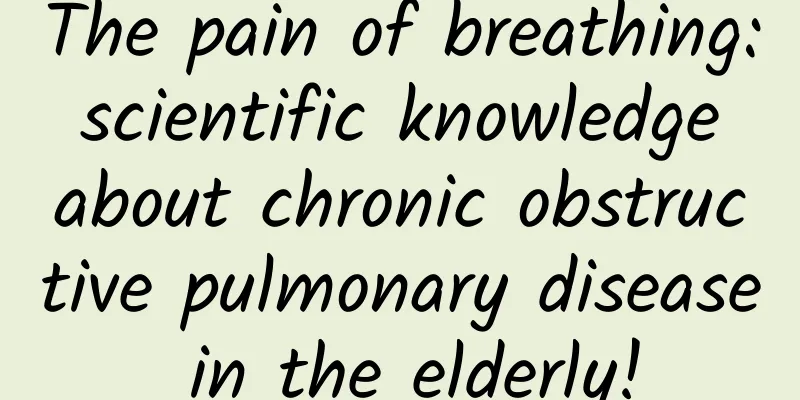[Fat Bear Science] 15% of the population suffers from fatty liver. Please listen to the question: How far is this disease that many people do not pay attention to from liver cancer?
![[Fat Bear Science] 15% of the population suffers from fatty liver. Please listen to the question: How far is this disease that many people do not pay attention to from liver cancer?](/upload/images/67f1e8294fe02.webp)
|
In recent years, the prevalence of fatty liver disease has continued to rise. Fatty liver disease is seriously threatening the health of the Chinese people and is closely related to the high incidence of cirrhosis, liver cancer, diabetes, and arteriosclerotic cardiovascular and cerebrovascular diseases. However, general practitioners, non-digestive liver disease specialists, and the general public in my country, Europe and the United States still lack sufficient understanding of the hazards and prevention and treatment strategies of fatty liver. In epidemiological surveys in Europe and the United States, "the incidence of liver cancer caused by fatty liver has been on the rise; in some liver cancer patients with more severe fatty liver, the fat accumulation in the liver has reached an alarming level." Luo Xiaojun is the attending physician of the Hepatobiliary and Pancreatic Tumor Department of Chongqing Cancer Hospital. He is good at complex liver cancer surgery and has rich clinical experience in the diagnosis and treatment of liver cancer, pancreatic cancer, bile duct cancer and gallbladder cancer. He also has strong scientific research capabilities and has published several academic papers. 1 What is fatty liver? Fatty liver refers to a disease in which excessive fat accumulates in liver cells due to various reasons. It can be an independent disease or a manifestation of certain systemic diseases. Normal human liver tissue contains a small amount of fat, such as triglycerides, phospholipids, glycolipids and cholesterol, which weighs about 3% to 5% of the liver weight. If too much fat accumulates in the liver, exceeding 5% of the liver weight, or if more than 50% of the liver cells have fatty lesions histologically, it is called fatty liver. Generally speaking, fatty liver is a reversible disease, and early diagnosis and timely treatment can often restore to normal. 2 Related causes The liver is the central organ of the body's lipid metabolism. Intrahepatic fat mainly comes from food and peripheral adipose tissue. The abnormal metabolic mechanism that leads to lipid deposition in hepatocytes is not fully understood. It is currently believed that the formation of fatty liver is related to the following factors. obesity The subcutaneous fat tissue of obese people breaks down and enters the blood. A large amount of fatty acids are continuously transported to the liver, which easily causes fat to accumulate in the liver. The degree of fat accumulation in the liver is proportional to body weight. 30% to 50% of obese people have fatty liver, and the rate of fatty liver lesions in severely obese people is as high as 61% to 94%. When obese people control their body weight, fatty liver lesions are also alleviated. Drinking Alcohol is metabolized in the liver. Drinking a lot of alcohol can increase the burden on the liver, causing disorders in the decomposition and metabolism of fatty acids and causing fat accumulation in the liver. Therefore, the more you drink, the more likely you are to develop alcoholic fatty liver. In patients who drink a lot of alcohol for a long time, 75% to 95% of them have fatty infiltration in their liver biopsies. If they drink more than 80 to 160 grams of alcohol per day, the incidence of alcoholic fatty liver increases by 5 to 25 times. High-fat diet Eating meat or greasy food frequently will increase the burden on the liver, increase the liver's fat intake and synthesis, or reduce its transport and utilization, which will lead to fat accumulation in the liver. Liver disease Fatty liver occurs after suffering from hepatitis or other liver diseases because the patient has poor liver function and cannot effectively break down and metabolize fatty acids. In addition, the patient eats too much and exercises too little, which easily causes fat to accumulate in the liver. diabetes About 50% of diabetic patients may develop fatty liver. Because 50% to 80% of diabetic patients are obese, their plasma insulin levels and plasma fatty acids increase. Fatty liver is related to the degree of obesity and excessive intake of fat or sugar. drug Most drugs need to be metabolized by the liver. Some drugs or chemical poisons can cause fatty liver by inhibiting protein synthesis, such as tetracycline, adrenocortical hormones, puromycin, cyclohexylamine, emetine, arsenic, lead, silver, mercury, etc. Lipid-lowering drugs can also cause fatty liver by interfering with lipoprotein metabolism. other Malnutrition, fasting, pregnancy, rapid weight loss, tuberculosis, bacterial pneumonia, sepsis and other infections can easily lead to fat accumulation in liver cells and induce the occurrence of fatty liver. 3 How far is it from fatty liver to liver cancer? The reason why fatty liver turns into liver cancer is very simple. It is because when the fat in the liver increases and exceeds the storage capacity of the liver, the normal liver tissue becomes a warehouse for storing fat. The liver cells and their surroundings become fat tissue. As a result, the liver cells cannot get the blood supply they deserve and cannot absorb the required nutrients and oxygen, which makes it easy for inflammation and necrosis to occur, turning into fatty liver hepatitis. A cirrhotic liver can easily turn into liver cancer under the influence of some carcinogenic factors. This is what medicine calls: “ The three-step malignant transformation of fatty liver into hepatitis, hepatitis into cirrhosis, and cirrhosis into liver cancer. ” The early symptoms of fatty liver are not obvious. In the later stages, symptoms such as fatigue, dry mouth, dizziness, abdominal distension, loss of appetite, upper abdominal pain, and hepatosplenomegaly may appear. However, if the above symptoms appear, it generally means that the condition is already very serious and the best time for treatment has been missed. If fatty liver is not well controlled, some patients will develop fatty hepatitis, fatty cirrhosis, and liver cancer. The chance of simple fatty liver developing into liver cancer is relatively small. However, if fatty liver is combined with other liver diseases, the chance of liver cancer will increase significantly. Many people may not believe it. Is fatty liver, such a common disease, really that serious? Relevant data show that about 0.5% to 1% of patients with fatty liver and 2.8% of patients with fatty liver will develop liver cancer in about 20 years. However, once non-alcoholic fatty liver develops into cirrhosis, the incidence of liver cancer will increase to 4% to 27%. After non-alcoholic fatty liver develops into cirrhosis, 12.8% may become cancerous after 3 years, which is less than 8 percentage points less than hepatitis C cirrhosis. Data released by the Chinese Medical Doctor Association show that as of the end of 2010, the overall incidence of non-alcoholic fatty liver disease in my country was about 15%, and in first-tier cities it was close to 20% to 30%. Based on this calculation, there are at least 200 million people with fatty liver disease in my country, of which about 10% will develop cirrhosis, and 200,000 patients with non-alcoholic fatty liver disease will develop liver cancer three years later. Four steps from non-alcoholic fatty liver disease to liver cancer Fatty hepatitis Liver cancer Simple fatty liver Cirrhosis The first is simple fatty liver after the liver "gets fat". If simple fatty liver continues to increase, the liver will become a "warehouse". The fat that enters the body will cover the liver, and the liver will seem to be wearing a thick "cotton coat", making it difficult for nutrients to be delivered. The liver will begin to resist inflammation, which is called fatty liver hepatitis. If the inflammation continues, it will stimulate the proliferation of fibrous tissue in the liver, and the "cotton coat" will gradually thicken and harden, leading to cirrhosis of the liver. After cirrhosis, if the patient also has diabetes, obesity, hyperlipidemia, endocrine disorders, the body's internal environment and immune system function abnormalities, resulting in a decline in the immune system's ability to monitor tumor occurrence, and an inability to eliminate abnormal mutated cells, leading to cancer. Some cases of fatty liver hepatitis may directly transform into liver cancer without the formation of cirrhosis. In the past, we did not have a clear understanding of the correlation between these four, but with the accumulation of data in recent years, it is now believed that the process of fatty liver-related hepatitis, cirrhosis, and liver cancer is quite clear. In this process, the proportion of patients with fatty liver disease who eventually develop liver cancer may not be as high as the proportion of liver cancer caused by viral hepatitis such as hepatitis B and hepatitis C, but everyone should note that the incidence of fatty liver disease is very large in the population base. For example, in Beijing, according to epidemiological surveys, 31% of patients have fatty liver. The epidemiological survey rate of hepatitis C is only 0.49%. Therefore, after the population base is large, it can be observed that there will be more and more patients with fatty liver-related cirrhosis and liver cancer in the future. Over the past few decades, the country has invested a large amount of funds in the prevention and treatment of liver diseases. Chinese hepatology experts have also continued to overcome difficulties and devoted themselves to research, hoping that my country can get rid of the label of "a major liver disease country" as soon as possible. Unfortunately, the burden of liver disease in my country is still very heavy, with a total number of liver disease patients exceeding 400 million. In particular, fatty liver disease has replaced viral hepatitis and become the number one liver disease in China and even in the world. If fatty liver disease cannot be effectively prevented and treated, many patients will eventually develop cirrhosis and liver cancer, bringing a huge and heavy public health burden to families, society and the country. 4 How to prevent fatty liver and stay away from cancer? Due to the significant improvement in living standards in contemporary society, the increasing social pressure, the lack of daily exercise and other reasons, the incidence of fatty liver is on the rise. In order to effectively prevent the occurrence of fatty liver and prevent it from turning into liver cancer, people need to choose a healthy lifestyle and understand and master some disease prevention methods in daily life. Healthy diet The three meals a day should be reasonably matched and nutritionally balanced. It is recommended to eat foods rich in dietary fiber regularly to excrete toxins from the body. Maintain a high-protein (such as lean fish, river shrimp, and soy products), high-vitamin, low-sugar, and low-fat diet. Control fat intake, especially avoid animal fat intake. Eat more vegetables, fruits and foods rich in fiber. No snacks, no extra meals before bedtime. Avoid drinking and smoking, and eat less greasy food. Exercise properly Non-alcoholic fatty liver disease is caused by overnutrition, and everyone is a potential morbidity group. To stay away from it, exercise is essential. It is recommended to exercise for at least 30 minutes a day to feel the heartbeat and breathing speed up as the standard of exercise effect (the pulse rate during exercise is 100-160 times/minute). You can choose aerobic exercise, such as jogging, playing table tennis, badminton, cycling, swimming, etc. Note that it is very important to persist in exercising every day, because once people who exercise regularly stop exercising, it will promote fat accumulation, aggravate fatty liver and promote fat consumption in the body. You can start with a small amount of exercise and gradually reach an appropriate amount of exercise to enhance the consumption of body fat. Use drugs with caution Any drug that enters the body must be detoxified by the liver. Be careful of the toxic side effects of the drug, especially drugs that are harmful to the liver. You must absolutely avoid aggravating the damage to the liver. Proper selenium supplementation It can make the activity of glutathione peroxidase in the liver reach normal levels, which plays a good role in nourishing and protecting the liver. Liver function test is a must during physical examination Every physical examination should include liver function test, alpha-fetoprotein test and abdominal B-ultrasound to detect fatty liver and liver cancer at an early stage. It is recommended that men over 40, especially those who drink frequently or are obese, have a physical examination at a regular hospital once a year (including an upper abdominal B-ultrasound). Once fatty liver is discovered, you can undergo weight loss treatment under the doctor's advice. Generally, fatty liver will gradually disappear after a 5% to 10% weight loss. Active treatment The key to treating fatty liver is to eliminate the cause, control diet, increase exercise and reduce weight. In addition to diet, exercise, and the three highs, there are other rare causes that may also lead to the occurrence and aggravation of fatty liver. For the sake of your own health and the happiness of your family, please cooperate with the doctor for screening at a local regular hospital. In addition, if you are diagnosed with fatty liver, you should seek active treatment as soon as possible. Most patients with fatty liver will lose weight after more than half a year of proper treatment, and most of the fat deposits in the liver will disappear. The symptoms of abdominal discomfort will also be significantly alleviated, and liver function tests will be basically normal. For the elderly and frail people or those who suffer from high blood lipids, high blood sugar and high blood pressure at the same time, they should use drugs to lower blood lipids, blood sugar and blood pressure to protect the liver under the guidance of a doctor, which can effectively control the transformation of fatty liver into hepatitis. Text/ Fat Bear Picture/ Internet (Contact for deletion) Reviewer/ Luo Xiaojun Original article, no reproduction without authorization Chongqing Science Popularization Base/Member of China Medical We-Media Alliance Chongqing Municipal Science and Technology Commission Science and Technology Communication and Popularization Project National Health Commission National Basic Public Health Service Health Literacy Project |
Recommend
Best time for cervical polyp surgery
The best time for surgical treatment of endometri...
How is syphilis transmitted?
Syphilis is a serious infectious disease that is ...
What kind of exercise should I do to lose weight during my period?
For women, losing weight can be said to be a life...
Why do breasts produce milk?
Generally, pregnant women will have milk. Because...
Can a pregnant woman sleep on her back during the fifth month?
Can you sleep lying flat when you are five months...
What should I pay attention to when inducing labor in the third month of pregnancy?
What should you pay attention to when inducing ab...
Will patients with low estrogen levels not ovulate?
In life, most women have a history of abortion, a...
Will inflammation affect menstruation?
Women are under a lot of pressure nowadays. Many ...
No more skin test for ceftriaxone? This article will help you understand the key points of skin test
Penicillin and cephalosporin (also known as β-lac...
Is Desert Rose easy to grow? What should you pay attention to when growing Desert Rose?
Desert rose is a common flower in life. It is lov...
The latest research determines the best time to fall asleep! Going to bed too early or too late has health risks...
Everyone is familiar with the dangers of staying ...
What is the method of stewing fish maw with American ginseng and wolfberry? How to cook lotus root stewed fish maw?
The delicious fish meat and its low price make th...
Medical experts talk about science | Is blood in stool caused by hemorrhoids? Who is the "killer" behind hemorrhoids?
| The picture comes from the Internet In daily li...
If a baby eats pumpkin and his skin turns yellow, will the baby be fine? Why does the skin turn yellow if the baby eats too much pumpkin?
When the baby is four or five months old, you can...
What should I do if my heels hurt after a normal birth?
If conditions permit, most women will choose natu...









